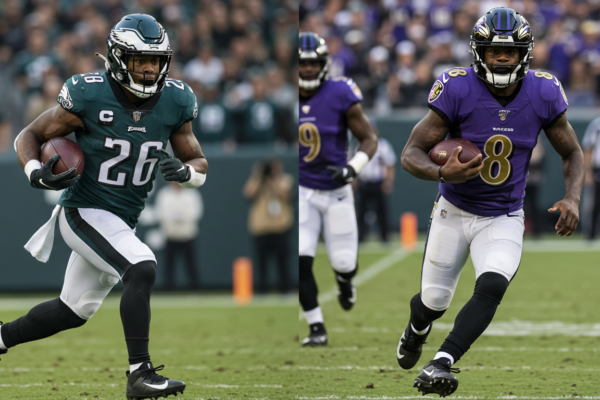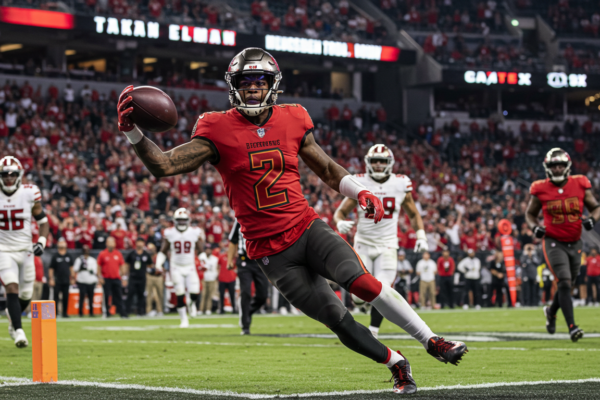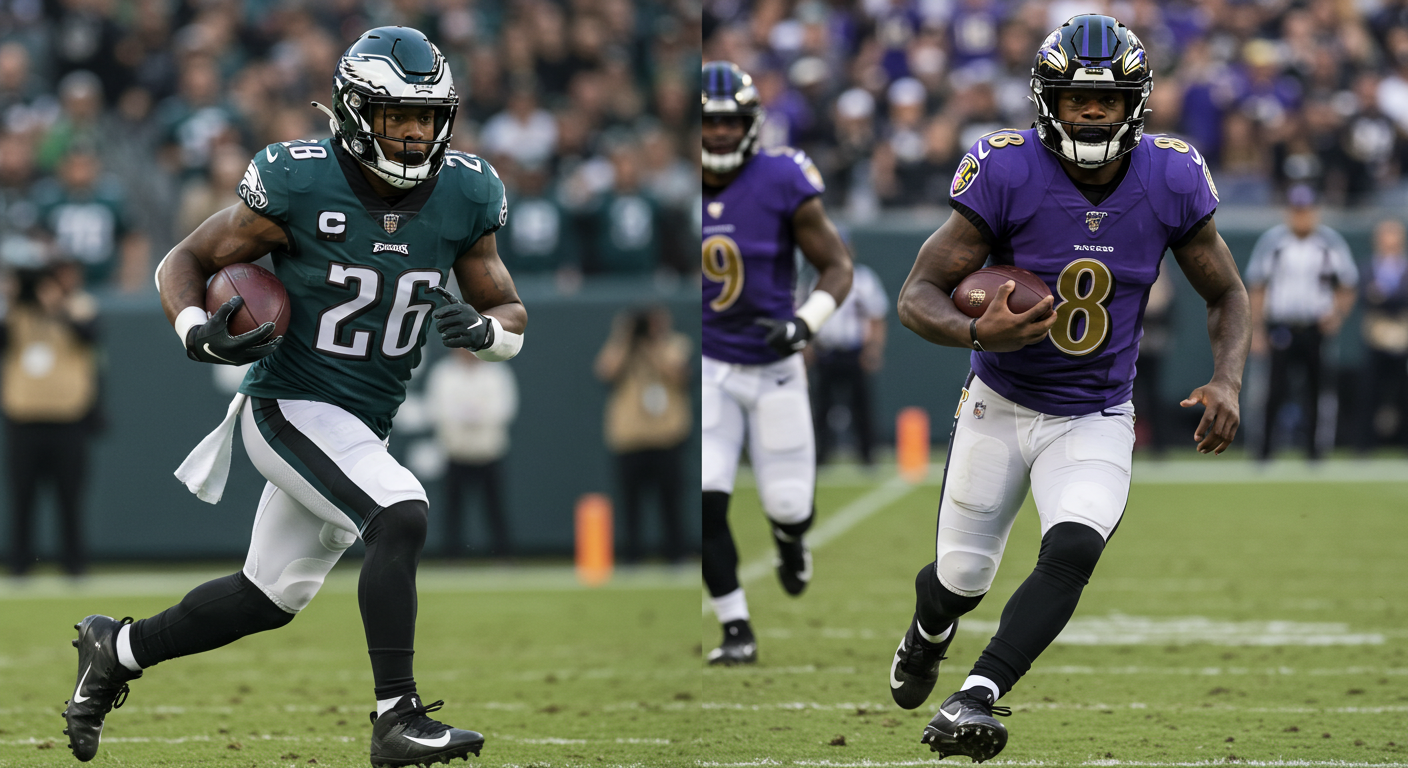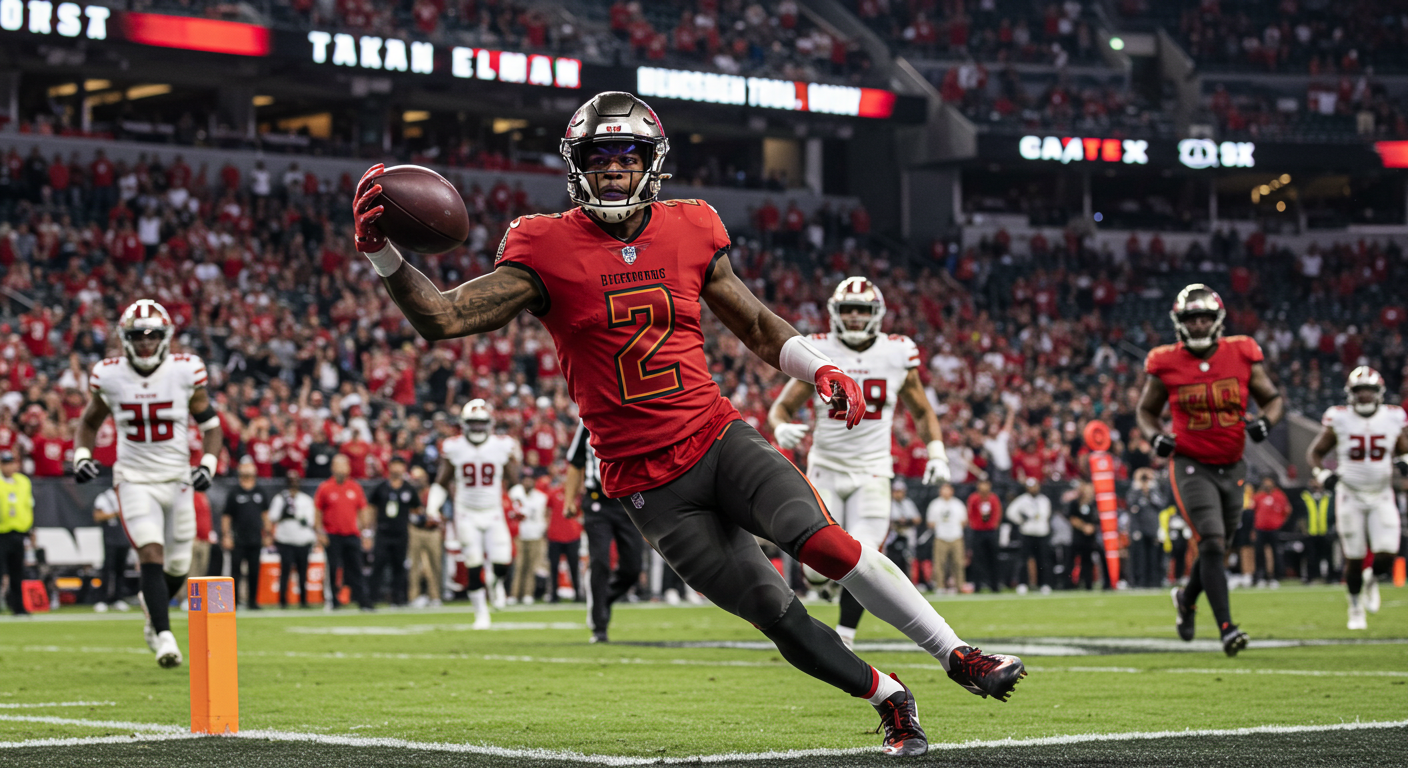

Steelers vs Baltimore Ravens Match Player Stats: AFC North Rivalry Evolution [2025]
The most recent Steelers vs Baltimore Ravens match player stats tell an evolving story in what many consider the NFL’s fiercest rivalry. I’ve broken down their three latest showdowns to reveal how this AFC North battle is shifting in real-time, with star performances and tactical adjustments that left fans breathless.
Inside the Three-Game Rivalry Saga
The intensity of this storied AFC North rivalry was on full display across these recent matchups:
- January 11, 2025: Ravens dominated the AFC Wild Card playoff game 28-14
- December 21, 2024: Ravens controlled a critical divisional showdown 34-17
- November 17, 2024: Steelers squeezed out an 18-16 win in a defensive struggle
These weren’t just ordinary games—they were tactical chess matches between two of the NFL’s most respected coaches, with John Harbaugh and Mike Tomlin facing off for their 34th head-to-head meeting.
The “King Henry” Effect: How Derrick Transformed Baltimore’s Attack
The arrival of Derrick Henry has completely reinvented the Ravens’ offensive identity. His game-by-game rushing numbers against Pittsburgh tell a remarkable progression:
Henry’s Three-Game Evolution:
- November 2024: 65 yards, 1 TD on 13 carries
- December 2024: 162 yards on 24 carries (Ravens single-game record vs Steelers)
- Wild Card (Jan 2025): 186 yards, 2 TDs on 26 carries (Ravens playoff record)
His Wild Card performance was particularly stunning, generating +79 rushing yards over expected while combining with Jackson for the second-most productive QB-RB rushing duo in NFL playoff history (267 yards).
After the playoff victory, Lamar Jackson had a colorful way of describing Henry’s dominance: “When Lightning McQueen gets flying, flashing past, like ‘pshew, pshew’…” showcasing the electric atmosphere Henry brought to Baltimore’s backfield.
Ravens coach John Harbaugh put it simply when asked if Henry gave them a different element compared to previous seasons: “Yes. It’s great to have a great back. He’s obviously running really hard and really physical and downhill.”
The Jackson-Wilson Quarterback Duel
The matchup between Lamar Jackson and Russell Wilson showcased both brilliance and struggle:
Jackson’s Three-Game Stats:
- Wild Card: 16/21, 175 yards, 2 TDs, 0 INTs, 81 rushing yards
- December: 15/23, 207 yards, 3 TDs, 1 INT, 22 rushing yards
- November: 16/33, 207 yards, 1 TD, 1 INT, 46 rushing yards
Wilson’s Three-Game Stats:
- Wild Card: 20/29, 270 yards, 2 TDs, 0 INTs, 6 rushing yards
- December: 22/33, 217 yards, 2 TDs, 1 INT, 27 rushing yards
- November: 23/36, 205 yards, 0 TDs, 1 INT, 1 rushing yard
While Wilson posted solid yardage numbers, Jackson’s efficiency and dual-threat capability created a tactical nightmare for Pittsburgh’s defense. As former NFL receiver Chad Johnson noted before their November matchup: “Can T.J. Watt really rush up the field and lose contain like he wants to? Everything has to change when you play the Ravens.”
After the November loss, Jackson expressed frustration despite putting up decent numbers: “Our defense played great today. They held a great offense to 18 points and we just scored 16 points. We’ve been putting up all these points this season. That’s annoying.”
The Defensive Chess Match
Both defenses demonstrated why this rivalry remains the NFL’s most physical:
Ravens Defensive Standouts:
- Marlon Humphrey: Game-changing 37-yard pick-six in December that effectively sealed the win
- Odafe Oweh: 2.5 sacks in the November contest, consistently pressuring Wilson
- Nnamdi Madubuike: 2 sacks in the playoff victory, collapsing the pocket from the interior
Steelers Defensive Stars:
- Patrick Queen: 10 tackles, forced fumble, and fumble recovery against his former team in November
- T.J. Watt: Maintained his status as all-time sack leader vs Ravens (17 career sacks)
- Alex Highsmith: Delivered crucial pressure in multiple games including a playoff sack
The quarterback-safety chess match between Jackson and Steelers safety Minkah Fitzpatrick was particularly fascinating. As Ravens insider Ryan Mink noted: “Jackson threw three touchdowns in Baltimore’s Week 16 win over Pittsburgh, but the one throw he won’t forget is his fourth-quarter interception to Fitzpatrick. Jackson was fuming on the sideline after his turnover.”
Tactical Evolution in the Ground Game
The rushing attack disparity between these teams grew increasingly evident across the three matchups:
Ravens Rushing Dominance:
- Wild Card: 299 total rushing yards (franchise playoff record)
- December: 184 rushing yards
- November: 111 rushing yards
Steelers Rushing Struggles:
- Wild Card: Just 29 total rushing yards
- December: 90 rushing yards
- November: 104 rushing yards
Steelers linebacker Mark Robinson revealed their initial strategy for containing Henry: “Being gap sound. Guys in their gap, winning their one-on-one matchups. Getting off their blocks and things like that, and most importantly, not being scared to tackle him.”
This approach worked in November but fell apart in subsequent meetings as the Ravens’ offensive line mastered their blocking schemes. In the playoff game, Baltimore’s offensive line coach George Warhop (nicknamed part of “The Mushroom Club” by Coach Harbaugh) deserved significant credit for creating massive running lanes.
Record-Breaking Individual Performances
Several players etched their names in the record books:
- Lamar Jackson: Set a Ravens team record with his 37th touchdown pass during the December game
- Derrick Henry: His 186 playoff rushing yards became the most by a Ravens player against Pittsburgh
- Chris Boswell: Became only the second player in NFL history to kick six field goals twice in the same season during Pittsburgh’s November win
The Fan Experience: What This Rivalry Means
For Baltimore and Pittsburgh fans, these games transcend ordinary football. As one Ravens fan described after attending the playoff game: “Going to a Ravens/Steelers rivalry game at home in the playoffs was an amazing memory.”
The rivalry’s intensity extends back to 1996, when Art Modell moved the Cleveland Browns to Baltimore. Steel Mill closures in the 1970s and 1980s brought many Pittsburgh residents to Baltimore, creating divided loyalties in Maryland.
As Baltimore Magazine captured it: “On November 18, the teams will meet again in Pittsburgh. For the fourth straight year the game is on Sunday night, a showcase for nationally attractive match-ups. Two Ravens-Steelers games in a physically and emotionally exhausting three-week stretch. Fans, players, coaches—will anybody be able to get out of bed on Monday morning?”
Position Battles That Defined These Games
Key individual matchups shaped the overall outcomes:
Center vs. Defensive Tackle: Tyler Linderbaum (Ravens) vs. Cameron Heyward (Steelers) became a critical interior battle. As Ravens insider noted: “The Ravens will look to get Derrick Henry going, and winning the war in the middle will be pivotal. It will be strength on strength with the two Pro Bowlers matching up.”
Wide Receiver vs. Cornerback: George Pickens (Steelers) vs. Nate Wiggins (Ravens) emerged as a new chapter in this rivalry. As one analyst noted: “The Wiggins-Pickens matchup will be a staple in this rivalry for years.”
Linebacker vs. Running Back: Patrick Queen (Steelers) vs. Derrick Henry (Ravens) took on extra significance as Queen faced his former team. After Henry’s long touchdown run in the playoff game, Queen refused to discuss it, simply stating: “I don’t want to talk about it.”
The “Lamar Jackson Effect” That Changed Everything
What truly separated these games was Jackson’s evolution as both a passer and strategical runner. In the playoff victory, the Ravens exploited the Steelers’ defensive aggression with designed quarterback runs that forced linebackers to constantly make impossible choices.
As analyst Emmanuel Acho described: “The Ravens scheme is ridiculous and if you can’t stop this, you’ll never stop the Ravens.” The combination of Henry’s power and Jackson’s elusiveness created a “pick your poison” scenario for Pittsburgh’s defense, with both stars finding success.
NBC analyst Chris Simms highlighted the Steelers’ dilemma: “You gotta take those chances because if you just sit back and go, ‘Well, we’ll just play run defense and we’ll try to fit in every gap,’ they are too creative in too many ways.”
FAQs About Steelers vs Ravens Player Statistics
Who was the most dominant offensive player across all three recent games?
Derrick Henry established himself as the most consistent offensive force with 413 total rushing yards and 3 TDs across the three games. His playoff performance of 186 yards stands as one of the most impressive individual showings in recent rivalry history.
Which quarterback handled the pressure better in these matchups?
Lamar Jackson outperformed Russell Wilson with 6 total passing TDs to Wilson’s 4, while adding 149 rushing yards compared to Wilson’s 34. Jackson’s combined effectiveness as both a passer and runner gave Baltimore a significant advantage, particularly in the December and January games.
What was the turning point in the Ravens’ playoff victory?
The Ravens’ 13-play, 85-yard touchdown drive in the second quarter—consisting entirely of running plays—was the psychological turning point. This drive, capped by Henry’s 8-yard TD, showcased Baltimore’s physical dominance and stretched their lead to 14-0.
How did the Steelers manage to win the November matchup?
Pittsburgh’s victory came through disciplined gap control against Henry (holding him to 65 yards), six Chris Boswell field goals, and forcing three Ravens turnovers, including a crucial interception by Payton Wilson that set up Boswell’s final field goal.
What defensive adjustment did Baltimore make after their November loss?
The Ravens increased their use of stunts and twists along the defensive line in subsequent games, generating more pressure on Wilson while maintaining gap discipline against Pittsburgh’s running game. They also deployed more varied coverage schemes that confused Wilson’s pre-snap reads.
Why has this rivalry remained so intense over the years?
As Steelers defender Patrick Queen explained, this isn’t just AFC North familiarity: “They don’t like us, and we don’t like them.” The teams have mirrored identities built on defense, physical play, and tough-minded coaching, creating natural tension between franchises that have combined for eight Super Bowl titles.
The Future of This Storied AFC North Rivalry
The player statistics from these three recent Steelers vs Baltimore Ravens matchups reveal a rivalry in flux. Baltimore’s offensive evolution under Lamar Jackson, paired with Derrick Henry’s bruising running style, has created a winning formula that Pittsburgh has struggled to counter.
For the Steelers to reclaim dominance in this AFC North battle, they’ll need to address their rushing attack deficiencies and develop more creative defensive approaches to contain the Jackson-Henry tandem. The quarterback position remains a question mark for Pittsburgh’s long-term strategy against Baltimore.
As this rivalry continues to evolve, these Steelers vs Baltimore Ravens match player stats give us a window into where both franchises are headed—and ensure that the next chapter in this AFC North saga will be just as captivating as the last.







